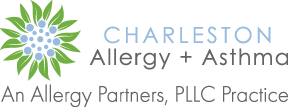Do you spend more time reading ingredients than enjoying your meal? With more than 160 known types, life with unmanaged food allergies can feel exhausting. But with the proper education, you can navigate eating with ease. Welcome to Charleston Allergy and Asthma‘s simple guide to the “Big Nine” food allergies.
What are the “Big Nine” food allergens?
Did you know that just nine food allergens account for over 90% of all allergic reactions in the United States? This “Big Nine” includes milk, eggs, fish, shellfish, tree nuts, peanuts, wheat, soybean and sesame. Even small amounts of these allergens can trigger a severe reaction, which is why vigilance is vital when it comes to your diet.
1. Milk
Cow’s milk allergy is one of the most common allergies among children. While most kids eventually grow out of the allergy, it can be a major inconvenience for those who do not. Milk allergies can cause a range of symptoms, from hives and rashes to more serious reactions like difficulty breathing. There are now a range of dairy-free milks found in most grocery stores and even dairy-free cheeses and yogurts to choose from as well!
2. Eggs
Egg allergies occur when the immune system mistakenly identifies the proteins in egg whites or yolks as harmful. Reactions can include hives, stomach cramps, and, in severe cases, anaphylaxis. While eggs are a highly versatile ingredient, many substitutions can be used in their place. Some options include applesauce, mashed bananas, buttermilk and commercially available egg replacers. These substitutes can help provide the binding, leavening or emulsifying properties of eggs in a recipe. Like cow’s milk, the majority of young patients diagnosed with an egg allergy will out grow it by school age.
3. Peanuts
Unlike the beforementioned allergies that most young children out grow, peanut allergies tend to persist throughout adulthood with an average of only 1 in 5 children developing tolerance to peanut over time. This type of allergy can trigger a range of symptoms, from mild discomfort to life-threatening anaphylaxis. Cross contamination is important to watch for with peanuts as contact with objects that have come into contact with peanuts, such as utensils, can also cause an allergic reaction in some patients
4. Tree Nuts
Despite their name, tree nuts are not actually nuts but rather seeds enclosed in a hard shell or woody fruit. While an individual may be allergic to one tree nut, it does not guarantee they are allergic to all types. Common tree nut allergies include almonds, cashews, walnuts, hazelnuts and pistachios. Although included in the “Big Nine,” tree nut allergies only affect 0.5 to 1% of Americans.
5. Shellfish
Shellfish allergy is an immune system response to proteins found in shellfish, including both crustaceans (shrimp, crab and lobster) and mollusks (oyster, scallop, clam). Symptoms of a shellfish allergy can range from mild hives to more severe reactions such as difficulty breathing and anaphylaxis. Individuals with shellfish allergies should avoid not only the actual shellfish but also any products or foods that may have come into contact with them, as cross-contamination can occur during preparation or cooking.
6. Fish
While seafood is enjoyed by many worldwide, it can be life-threatening for those with a fish allergy. Fish and tree nut allergies are similar in that the allergies are not all-inclusive. For example, a person allergic to cod may be fine eating salmon.
7. Wheat
Wheat allergies occur when the immune system negatively reacts to ingested wheat or products containing wheat. Symptoms may include hives; itching or swelling of the lips, tongue, or throat; difficulty breathing; abdominal cramps; nausea or vomiting; diarrhea; and, in rare cases, anaphylaxis. Wheat allergy sufferers should avoid foods such as bread, pasta and cereal. Alternative grains like rice, oats and quinoa can be suitable substitutes for wheat-containing products. Wheat allergy is more common in early childhood with most patients developing tolerance over time.
8. Soybeans
For individuals with soybean allergies, several alternatives are available, such as almond, rice, coconut and oat milk. It is important for individuals with soybean allergies to carefully read food labels and avoid any products containing soy, including soy sauce, miso and edamame. Though caused by proteins found in soybeans, these allergies can often be triggered by soy found in unexpected places like bread, crackers and even certain types of meat.
9. Sesame
As of Jan. 1, 2023, the FDA’s “Big Eight” has been expanded to the “Big Nine” with the inclusion of sesame allergies under the Food Allergy Safety, Treatment, Education and Research (FASTER) Act. While ingredients like sesame oil and seeds are used in many different snacks and dishes, allergen avoidance is difficult but not impossible. Alternatives such as canola, sunflower or grapeseed oil are suitable replacements for sesame oil, while sunflower seed, almond or cashew butter may be used to replace tahini, an ingredient common in many Middle Eastern cuisines.
Expand your pallet with Charleston Allergy and Asthma!
At Charleston Allergy and Asthma, we understand how limiting food allergies can be. That’s why our award-winning board-certified allergy specialists are here to help you taste all life has to offer! We provide Lowcountry patients with a full range of allergy treatments, including allergy diagnosis, immunotherapy treatments, and even oral immunotherapy, which can help you overcome your food allergies. Contact our team to schedule your next allergy appointment.




